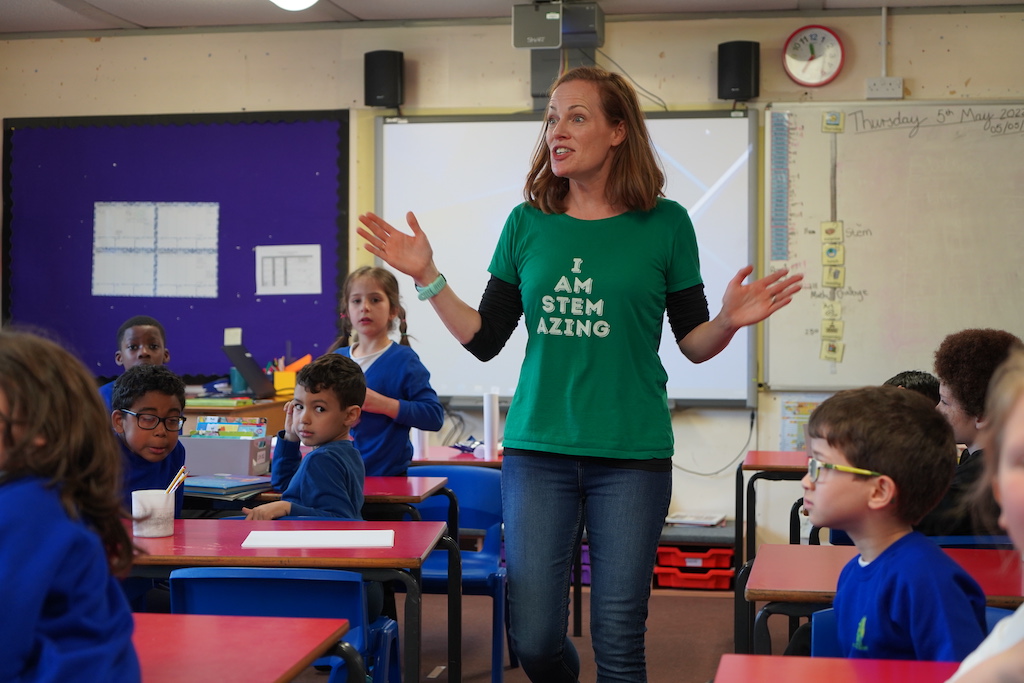STEM is the combination of science, technology, engineering and maths. People who work in STEM are the hidden heroes of humanity. Without these everyday heroes we would still be living in the dark ages. STEM superheroes save lives, protect our planet and create our future possibilities. They literally keep society functioning and moving forward, and yet most of the population is unaware of the vital work people in STEM do.
Visible role models
Research by Engineering UK has shown that a whopping 73% of 11 to 14-year-olds don’t know what engineers do, 69% of parents don’t know what engineers do, and 42% of teachers don’t feel confident giving engineering career advice. Is it any wonder then that we don’t have enough people choosing to pursue STEM and go into STEM careers, like engineering?
The STEM skills shortage is estimated to cost employers in the UK £1.5bn a year. This cost to the economy is huge, but what will the cost to humanity be in the future if we don’t plug this gap?
Role models inform, influence and inspire the decisions people make about their life and careers. The lack of visible diverse STEM role models who represent the breadth of career opportunities in STEM is a key contributor to the skills shortage problem.
To plug the STEM skills gap, we need to widen the net. This requires more diverse role models to inspire and influence a wider pool of talent.
Diversity is the difference
As we evolve through the fourth industrial revolution and beyond, the need for innovation in STEM will continue to increase at pace. Innovation in STEM is key to solving some of our biggest global challenges. A key ingredient for innovation is diversity, but a well-known challenge in STEM is the lack of diversity, which is another reason diverse STEM role models are so important.
Black and ethnic minority workers make up only 12% of the UK STEM workforce and only 24% are women. When you look at engineering alone, it’s much worse, with only 14% women in engineering. This is not enough.
Research shows that children aged between 3 and 5 years old already show less support for counter-stereotypical STEM career choices, for example, a girl who wants to be an engineer. This is a major problem for STEM industries as these biases are established so young and then mostly reinforced over time, but we can do something about it.
Everyone benefits from diverse role models
We know that counter-stereotypical role models have a positive influence on minorities, but what about the majorities? Do they lose out? No.
Research shows that girls who only interact with male STEM educators reinforce their negative stereotype that they don’t belong in STEM. The surprising evidence is that boys who interact with female STEM educators don’t think they are any less able or respected but they have a more equitable view of girls and women in STEM so their experience is also positive. Win win!
This is not only crucially important for diversity but also a key piece of the inclusion puzzle.
In addition to this, a study presented in the Journal of Applied Developmental Psychology showed that early childhood is a key window in which educational interventions aimed at fostering female engagement with STEM may have greater impact. So diverse role models benefit everyone, and the younger this engagement happens the better.
The STEMAZING mission
STEMAZING are dedicated to inspiration and inclusion in STEM. They are passionate about the importance of diverse visible role models. One of their initiatives, the STEMAZING Inspiration Academy, empowers women in STEM to shine as visible role models and inspire primary school children through fun, interactive STEM sessions.
The diverse women in STEM participants take part in a four-month programme of training and workshops to build their confidence with public engagement and grow their STEM delivery toolbox. These newly empowered role models then deliver a six-week programme of live online sessions, which are all hands-on simple STEM activities and experiments designed to promote curiosity, creativity and courage. Places for primary schools are prioritised by percentage of families on free school meals to ensure they are reaching the areas with the highest need. Thanks to the organisation’s partners they can offer places free to a selected number of women and schools. As it is an online programme, women anywhere in the world can take part.
In just two years of running this programme they have empowered over 250 women in STEM from around the world and collectively delivered over 55,000 STEMAZINGKids experiments for young children. They continually receive fantastic feedback from women and schools saying how much they have benefitted. As the not-for-profit enterprise gains more support, it will be able to grow this impact significantly in future.
Diverse people are the raw ingredients. Inclusion is the recipe for success.
However, this is only part of the long-term solution. Recruiting more diverse people into STEM does not bring the potential benefits unless those diverse perspectives can thrive. This is the real recipe for success: inclusive cultures with psychologically safe working environments.
There’s a long way to go, but with more awareness of what good looks like and where the pain-points are, maybe then we will cultivate the STEM culture that enables and empowers everyone to thrive and bring their whole self to work, not only representing the diversity in the communities they serve, but enabling real innovation that will improve the future of humanity for everyone.
Join the mission
We need more women in STEM to level-up as visible role models. We all have a responsibility to enable this, and it’s something that can be done today to make 2023 a year of empowerment and inspiration.
For more information about joining our STEMAZING community and how you can support our mission of inspiration and inclusion in STEM, please visit our website: www.stemazingltd.com
Alex Knight CEng FIMechE FWES, founder and CEO of STEMAZING





